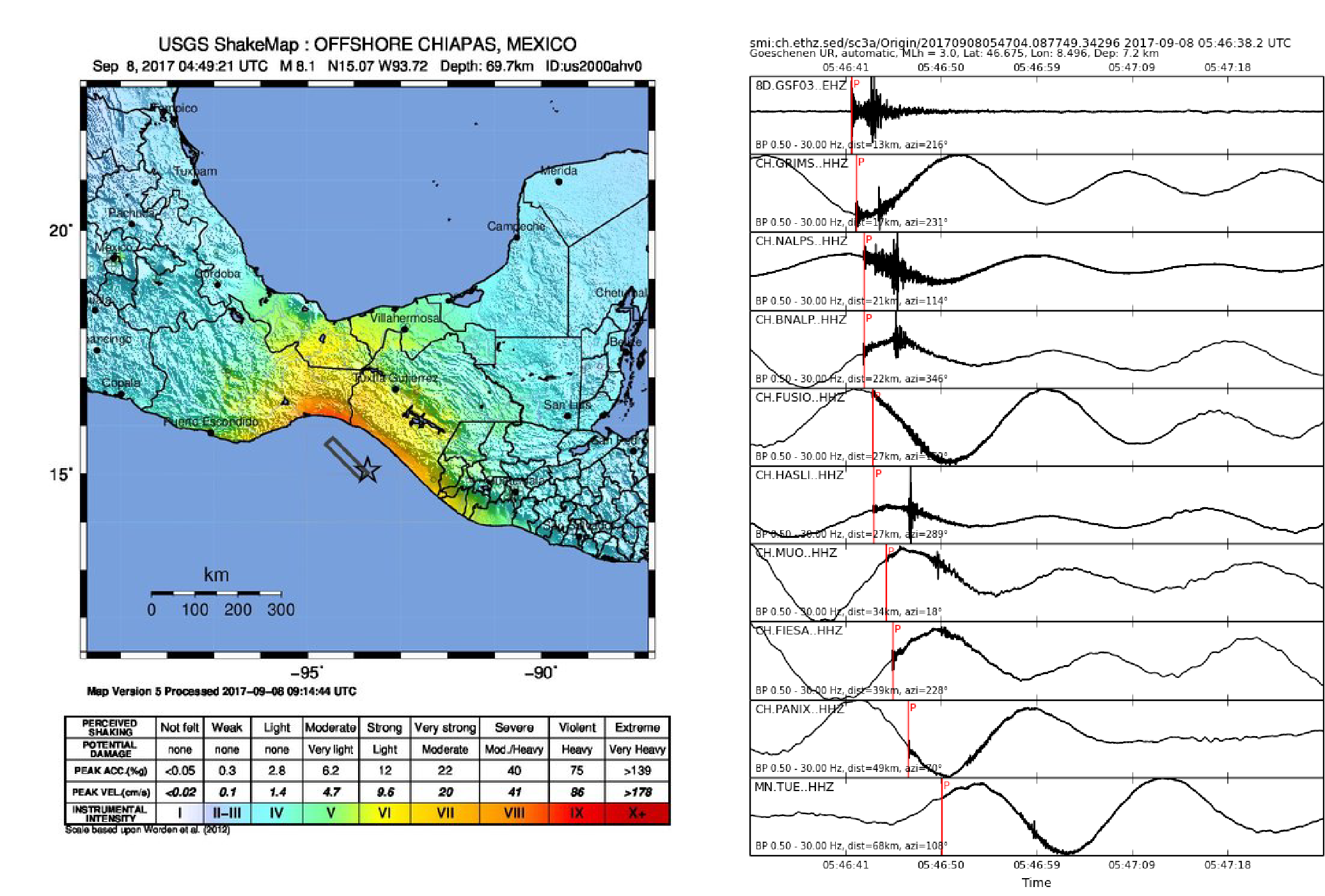2017-09-08
Earthquake off the coast of Mexico
A magnitude 8.1 earthquake struck in the Pacific Ocean, around 70 km from the coast of Mexico (state of Chiapas), at 6.49 a.m. (CET) on Friday, 8 September. According to the US Geological Survey, the earthquake originated at a depth of 70 km. The quake was felt in much of Mexico, Guatemala, El Salvador, Belize and Honduras. Given the earthquake's strength and depth and the epicentre's distance from the coast, the damage is likely to have been severe in coastal areas of Mexico and Guatemala. Widespread damage is to be expected in further inland too. Major earthquakes are a fairly frequent occurrence in Mexico and other Central American countries: over the last century, eight more earthquakes with a magnitude greater than 7.0 have occurred within a 250 km radius of this latest quake. The last destructive earthquake to hit Mexico was in 1985 and had a magnitude of 8. It caused over 10,000 fatalities.
Read more...The earthquake on Friday morning also triggered a tsunami warning. Tsunami waves of up to one metre high have been measured along the Mexican coast so far (www.tsunami.gov). However, there may well have been even larger waves at places not equipped with measuring instruments.
The Cocos Plate slides under the North American Plate off the Mexican coast, and the relative movement of the two plates generates considerable tension that is repeatedly discharged in the form of earthquakes. Initial assessments have classified this latest quake as a slip on a steeply dipping fracture surface (USGS, https://earthquake.usgs.gov/). Combined with the depth of the earthquake, this indicates that the earthquake did not occur directly on the boundary between the Cocos and North American Plates, but at a greater depth within the Cocos Plate.
The Mexico earthquake was registered by the SED's monitoring stations in Switzerland too, with the result that a minor, 1.6-magnitude quake in Göschenen (Canton of Uri) at 7.46 a.m. was automatically recorded as having a magnitude of 3.0. A manual appraisal soon identified this as a false alarm and the magnitude was corrected to 1.6. The automatically-calculated estimate was too high due to waves from the Mexico quake, which were still being registered in Switzerland one hour after the earthquake hit Central America. The Göschenen earthquake happened at the same time as the waves reached Switzerland, so the readings for it were excessively high.
